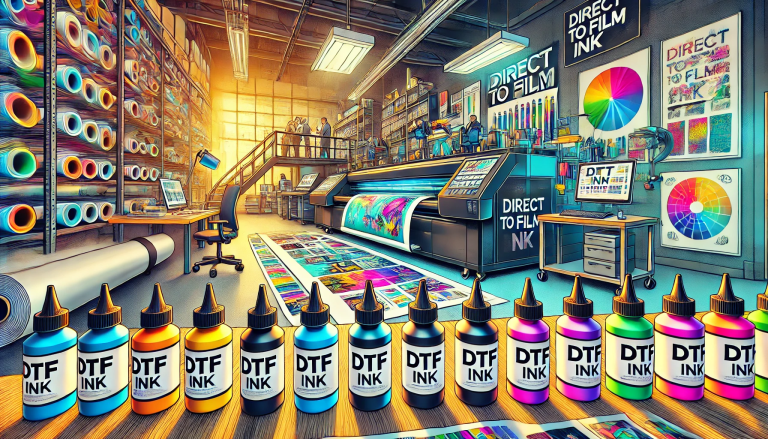“Get the Heat Transfer Film Reviews You Need to Make the Right Choice!” -MAXDTF- DTF transfer sheets large Factory, Transfer Film DTF Supplier, Made in china
Introduction
Heat transfer films are a great way to add a unique and creative touch to any project. Whether you’re looking to add a personal touch to a t-shirt, create a unique design for a mural, or create a custom logo for a business, heat transfer films can help you achieve your desired look. Heat transfer films come in a variety of colors, textures, and finishes, so you can find the perfect film for your project. In this article, we’ll review some of the best heat transfer films on the market and discuss their features, pros, and cons. We’ll also provide some tips on how to choose the right film for your project.
How to Achieve Professional Results with Heat Transfer Film: Tips and Tricks from the Pros
The heat transfer film is a great way to add a professional touch to any project. Whether you’re creating custom apparel, decorating a home, or crafting a unique gift, heat transfer film can help you achieve professional results. Here are some tips and tricks from the pros to help you get the most out of your heat transfer film.
- Choose the Right Film: Not all heat transfer films are created equal. Make sure you select the right film for your project. Consider the fabric you’re working with, the desired finish and the amount of time you have to complete the project.
- Prepare the Fabric: Before you apply the heat transfer film, make sure the fabric is clean and free of any dirt or debris. This will ensure that the film adheres properly and that the finished product looks its best.
- Use the Right Heat Press: Heat presses come in a variety of sizes and styles. Make sure you select the right one for your project. Consider the size of the fabric, the type of film you’re using, and the desired finish.
- Set the Temperature and Time: Heat transfer films require specific temperatures and times to ensure a successful application. Make sure you follow the manufacturer’s instructions for the best results.
- Peel Carefully: When you’re ready to remove the heat transfer film, make sure you peel it carefully. If you peel too quickly or too slowly, you may damage the film or the fabric.
By following these tips and tricks from the pros, you can achieve professional results with heat transfer film. With a little practice and patience, you’ll be able to create beautiful, custom projects that will last for years to come.
A Comprehensive Guide to Choosing the Right Heat Transfer Film for Your Project
Heat transfer films are an essential part of many projects, from customizing apparel to creating promotional items. Choosing the right heat transfer film for your project can be a daunting task, as there are many different types of films available. This guide will provide an overview of the different types of heat transfer films, as well as tips for selecting the best film for your project.
Types of Heat Transfer Films
There are several different types of heat transfer films available, each with its unique properties and uses. The most common types of heat transfer films are:
• Vinyl: Vinyl is a durable, flexible material that is often used for customizing apparel and other fabric items. It is available in a variety of colors and finishes and can be used to create intricate designs.
• Foil: Foil heat transfer films are made from a thin layer of metal, and are often used to create metallic designs on fabric items. Foil films are available in a variety of colors and finishes, and can be used to create unique, eye-catching designs.
• Flock: Flock heat transfer films are made from a soft, velvet-like material, and are often used to create textured designs on fabric items. Flock films are available in a variety of colors and finishes and can be used to create unique, tactile designs.
• Glitter: Glitter heat transfer films are made from a sparkly material, and are often used to create shimmering designs on fabric items. Glitter films are available in a variety of colors and finishes, and can be used to create unique, eye-catching designs.
Tips for Choosing the Right Heat Transfer Film
When selecting the right heat transfer film for your project, there are several factors to consider. Here are some tips to help you choose the best film for your project:
• Consider the material: Different types of heat transfer films are better suited for different materials. For example, vinyl is a great choice for cotton and polyester fabrics, while the foil is better suited for synthetic fabrics.
• Consider the design: Different types of heat transfer films can create different types of designs. For example, vinyl is great for creating intricate designs, while the foil is better suited for creating metallic designs.
• Consider the application: Different types of heat transfer films require different application methods. For example, vinyl films require a heat press, while foil films require a heat transfer machine.
• Consider the cost: Different types of heat transfer films can vary in cost. For example, vinyl films are typically more affordable than foil films.
Conclusion
Choosing the right heat transfer film for your project can be a daunting task, as there are many different types of films available. This guide has provided an overview of the different types of heat transfer films, as well as tips for selecting the best film for your project. By considering the material, design, application, and cost of the film, you can ensure that you select the best film for your project.
Exploring the Benefits of Heat Transfer Film for Customizing Apparel
The heat transfer film is an increasingly popular method of customizing apparel. It is a versatile and cost-effective way to add unique designs to clothing, accessories, and other items. The heat transfer film is a thin, flexible material that can be printed with a variety of designs and colors. It is then applied to the desired item using a heat press.
The benefits of using heat transfer film for customizing apparel are numerous. First, it is a relatively inexpensive option compared to other methods of customization. The heat transfer film is also easy to use and can be applied quickly and efficiently. Additionally, it is a durable option that can withstand multiple washings and wearings.
Heat transfer film also offers a wide range of design possibilities. It can be printed with any type of image, logo, or text, allowing for a great deal of creativity and customization. It is also available in a variety of colors and finishes, allowing for further customization.
The heat transfer film is also a great option for those who are looking to produce a large number of customized items. It is a fast and efficient way to produce multiple items with the same design. Additionally, it is a great way to produce items with unique designs that would be difficult or impossible to achieve with other methods.
Overall, heat transfer film is an excellent option for customizing apparel. It is a cost-effective, durable, and versatile option that offers a wide range of design possibilities. It is also a great choice for those who are looking to produce a large number of customized items quickly and efficiently.
Conclusion
Heat transfer films are a great way to add a unique and personal touch to any project. They are easy to use, come in a variety of colors and finishes, and are relatively inexpensive. With the right tools and techniques, anyone can create beautiful and professional-looking designs. Heat transfer films are a great way to add a personal touch to any project, and with the right tools and techniques, anyone can create beautiful and professional-looking designs.





